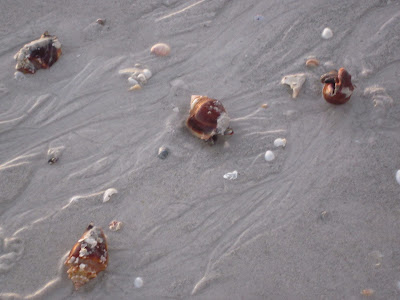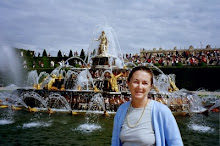I've posted a few photographs of some of the things I saw this month - besides birds, people, sunrises and sunsets.
 |
| At low tide, the sea leaves behind seagrasses, big barnacled pen shells, and many fragments of smaller shells. |
 |
| A close-up shot of a barnacle-covered pen shell. |
 |
| This little olive shell's animal left a distinctive trail, despite its unbelievably slow progress. |
 |
| The receding tide also left behind this damaged sea star. Four of its arms are damaged, and five are intact. It's about the size of a dinner plate. |
 |
| One morning the tide left behind many tiny silvery fish - sardines, like this one, killed by a recent red tide. |
 |
| These plovers peck around in the sand, seeking something so small I couldn't identify it. These birds are not solitary; seldom is one seen by itself. |
 |
| Sometime during the past year, the sea crept (or swept) up and stole away part of the barrier of grass and shrubs. |
 |
| That presents a problem for the owners of the condo building whose boardwalk now ends abruptly some 4 feet above the beach. |
 |
| I doubt that the sea carried this hibiscus blossom ashore. More likely the wind carried it here. |
 |
| People build things in the sand, using molds, shells, sticks, leaves, long seeds of the red mangrove, anything that comes to hand. |
 |
| Here are two formal and geometric structures, along with some of the "sculptor's" tools. |
 |
| Sanibel is famous for its sea turtle; the females lumber ashore in summer months to lay their eggs. Here's a carefully created and highly individualistic sea turtle. |
 |
| A lone spot of brightness to end the visit. |



No comments:
Post a Comment